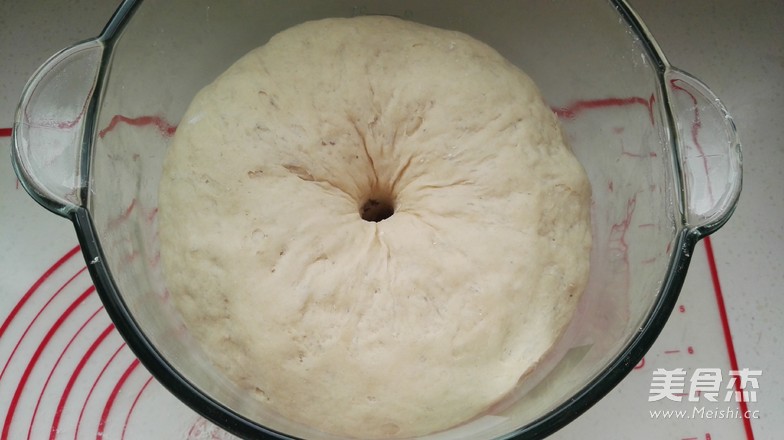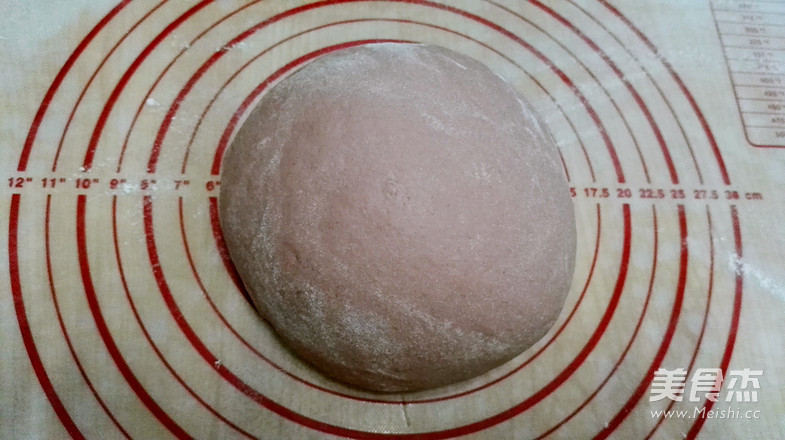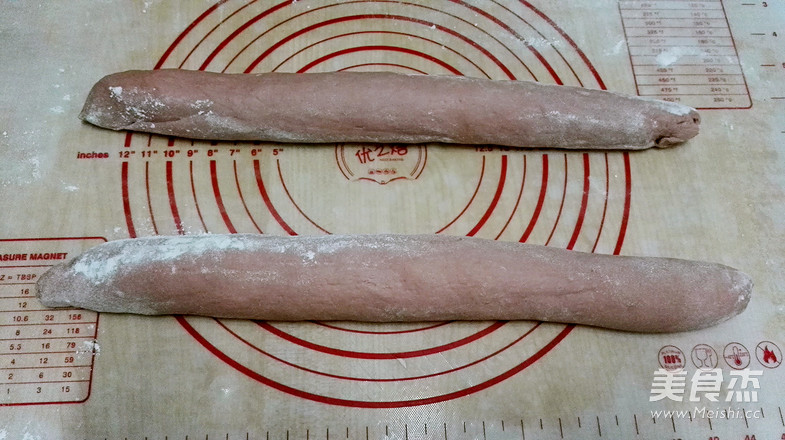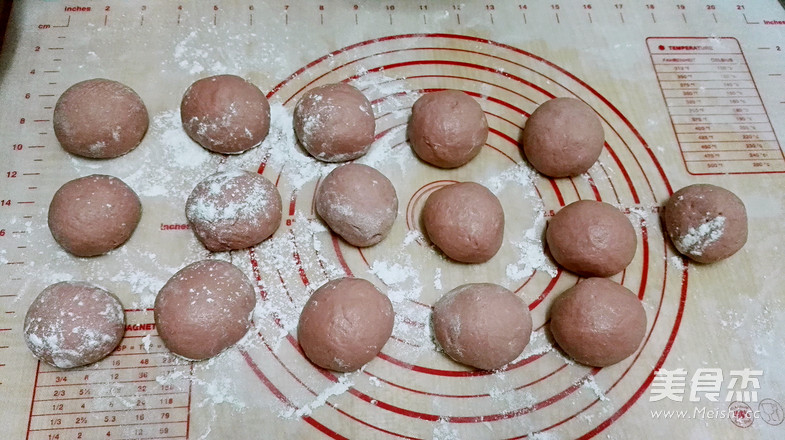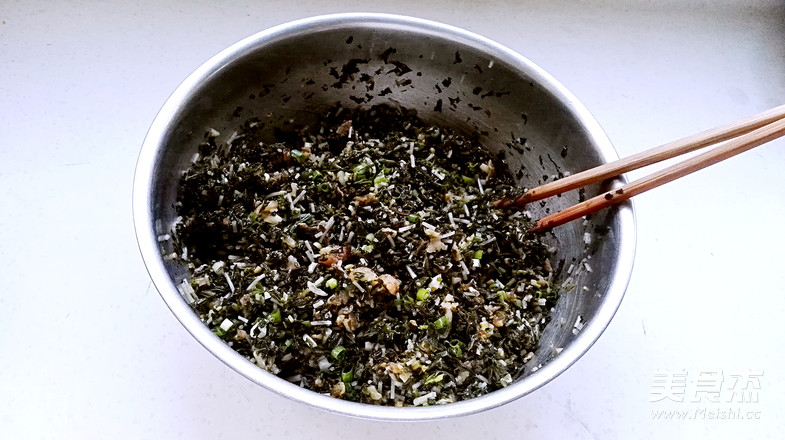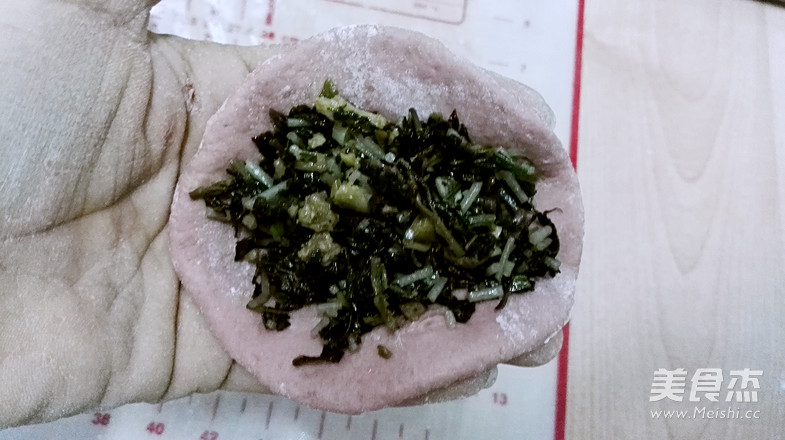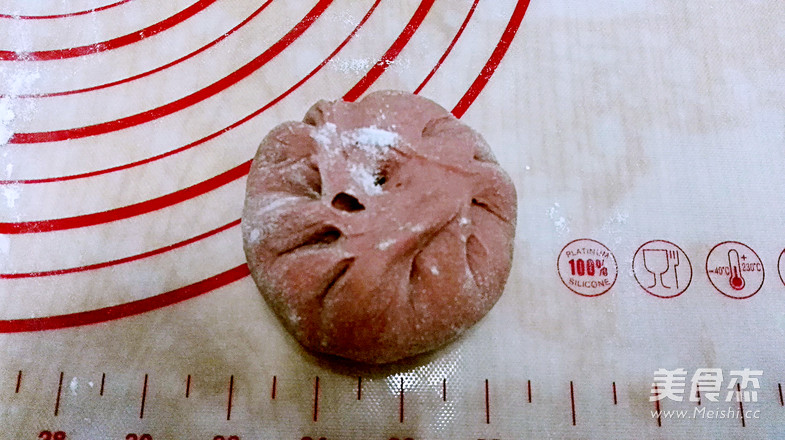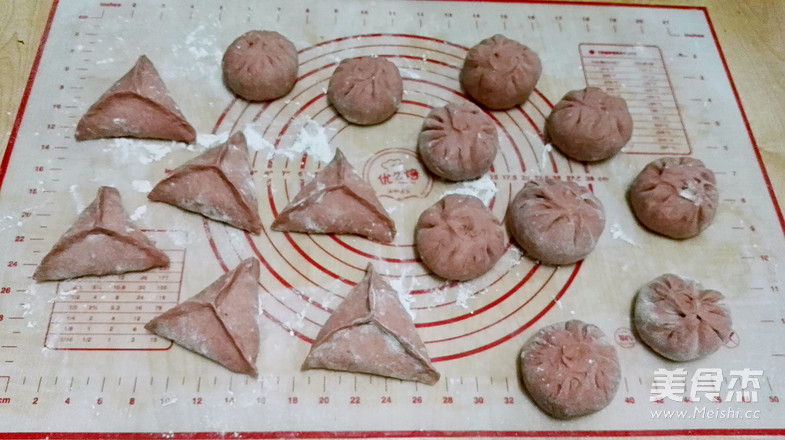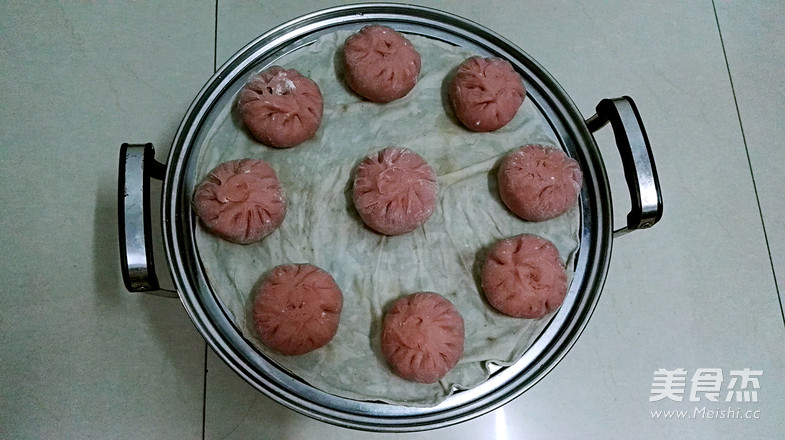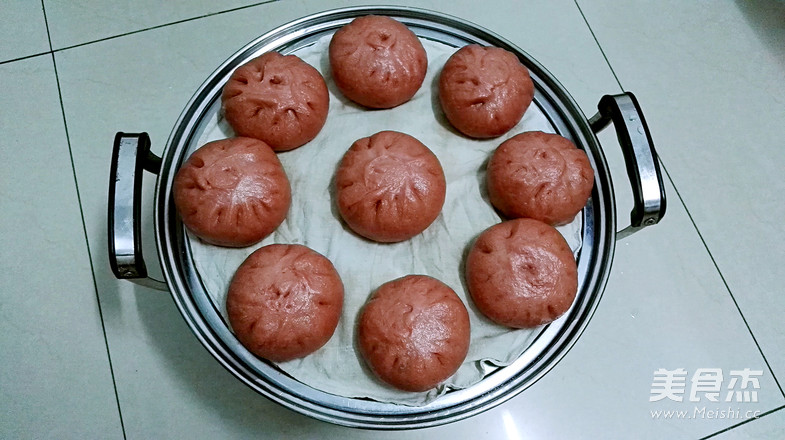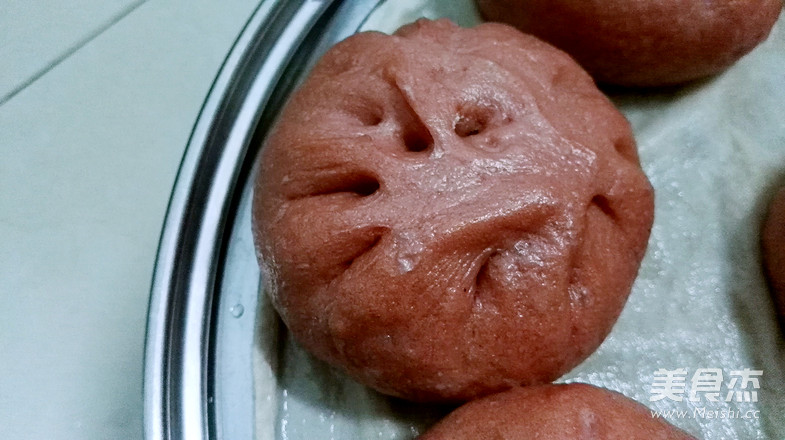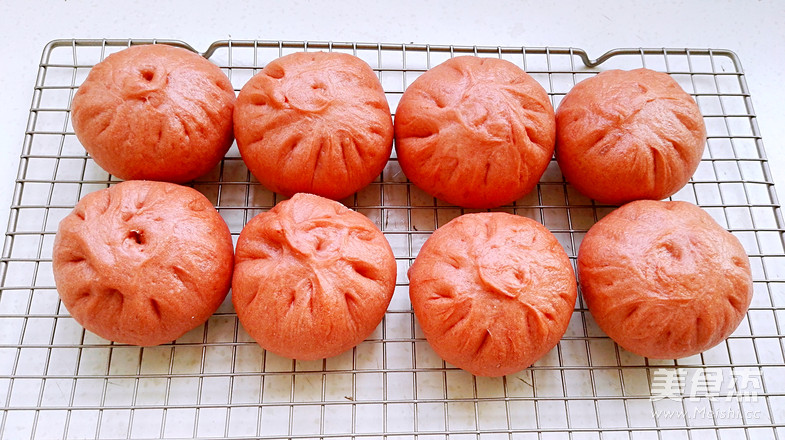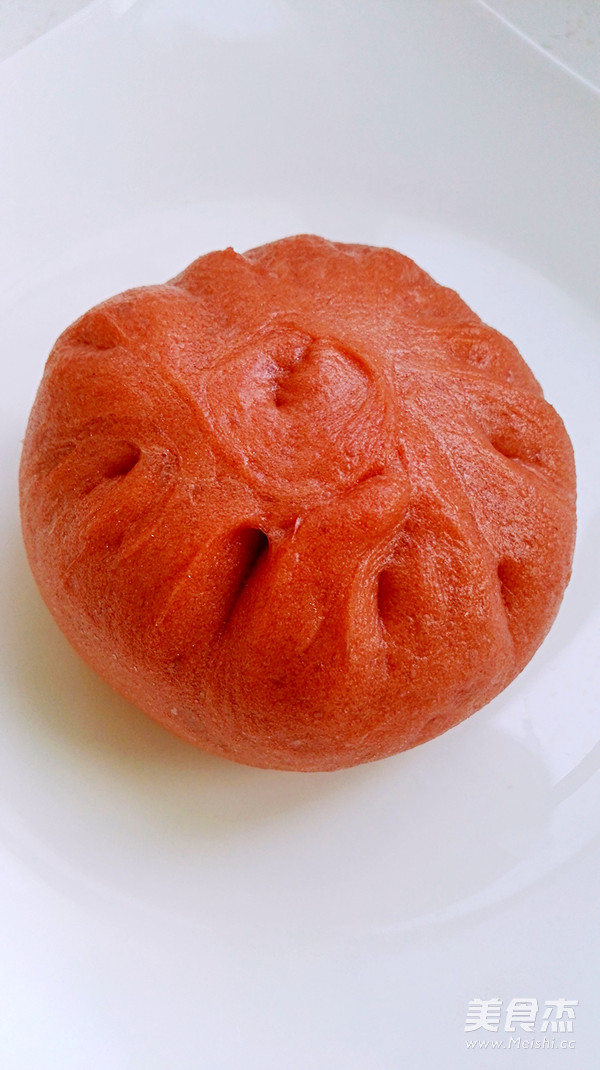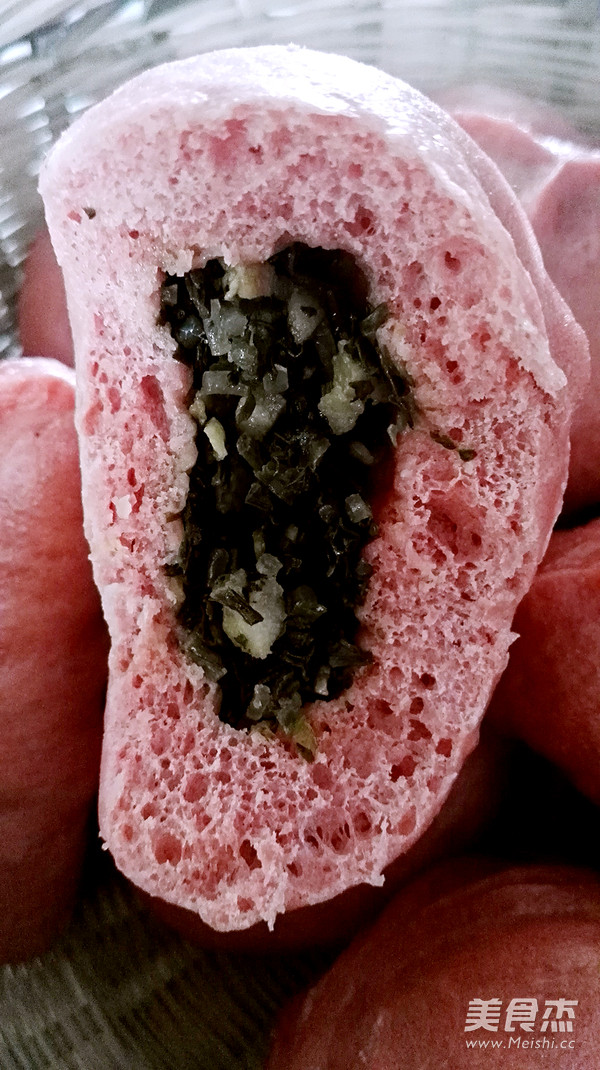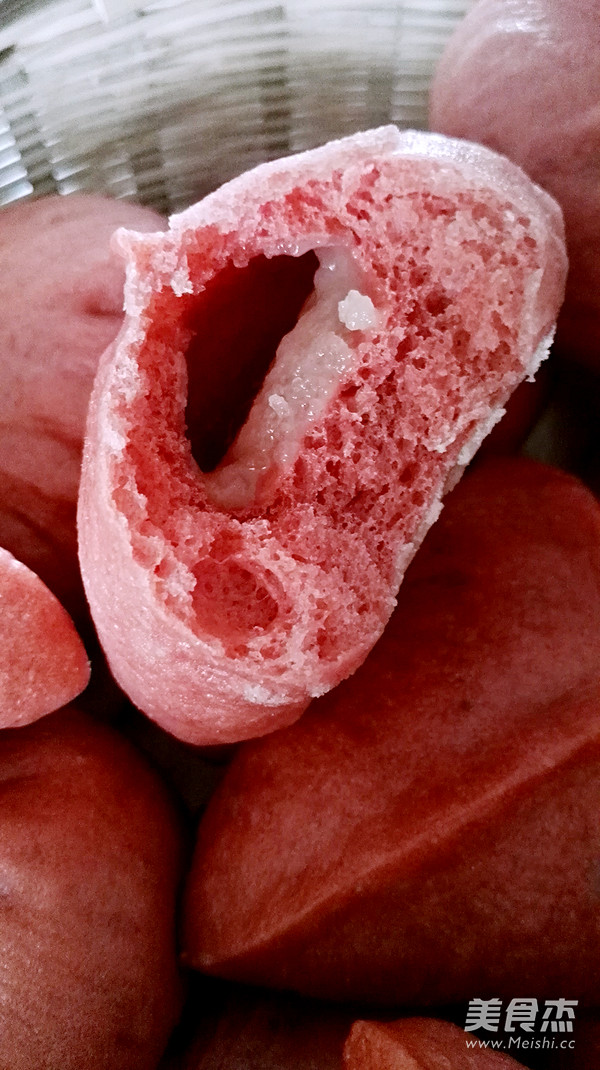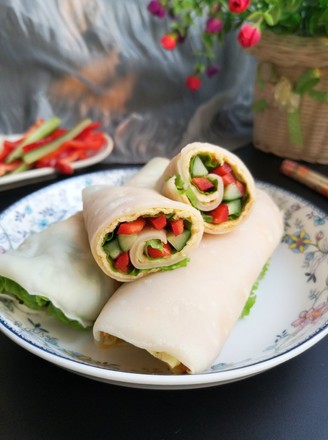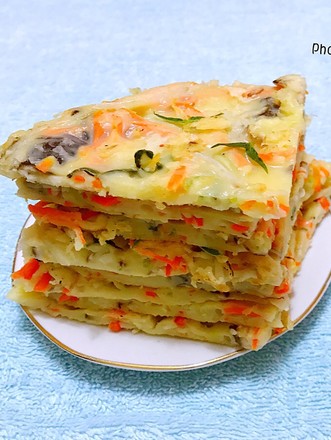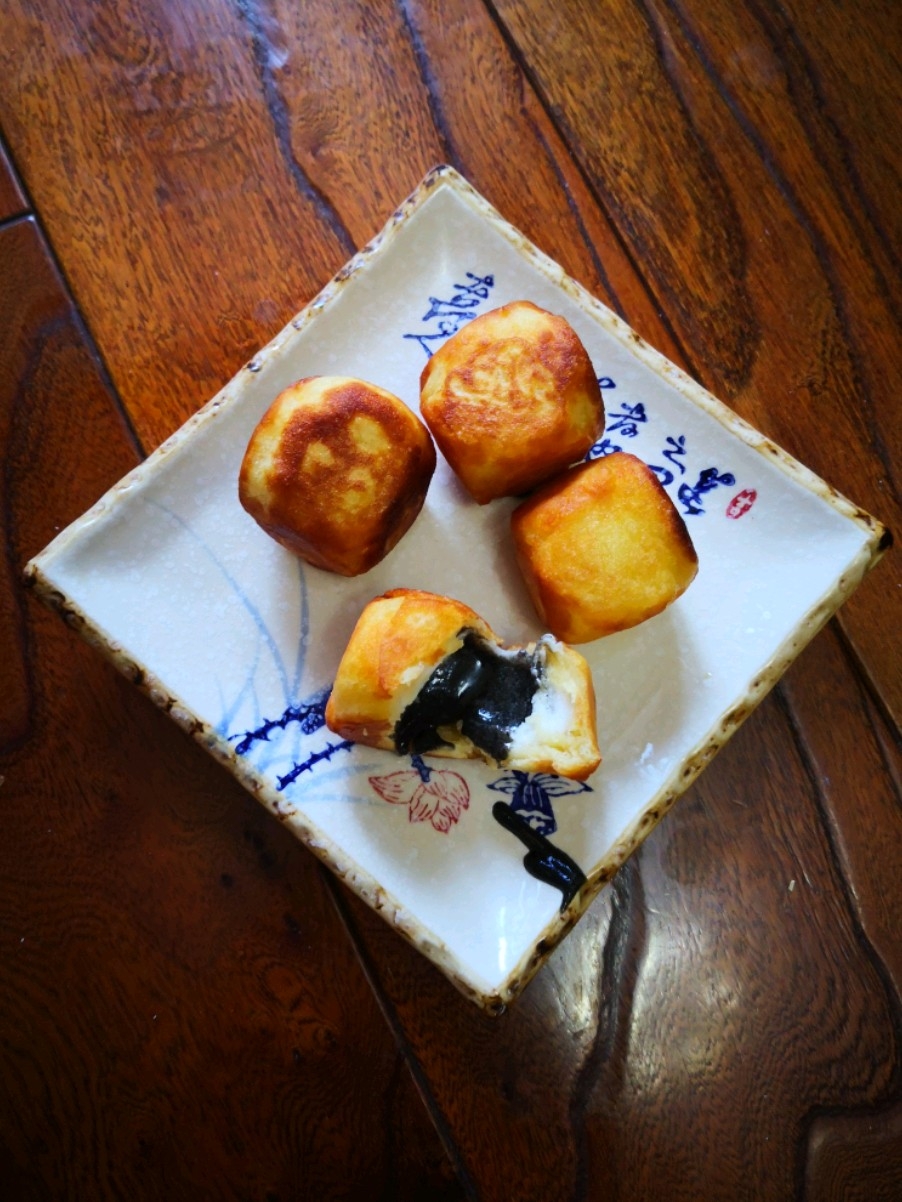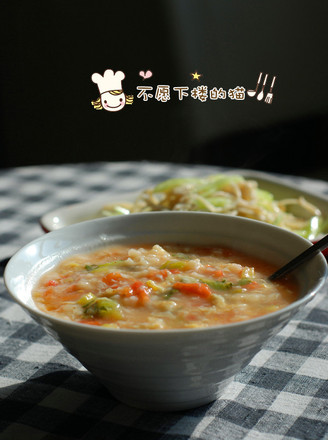Variety of Pasta: Red Velvet Buns
1.
Pour the flour, yeast, red yeast rice powder and white sugar into the noodle tank of the chef's machine. Pour the water on the yeast first, dissolve the yeast, put the noodle jar on the cook machine, start the machine, and form a smooth dough, cover with a damp cloth (or cling film) Ferment. (You can also choose to use a bread machine or hand kneading).
2.
One shot is twice as big, the finger sticks with the powder and does not shrink or collapse. After opening the even silk nest, it will be fermented (forgot to take the dough state diagram, refer to the dough state diagram below).
3.
Put a kneading pad or chopping board to vent the dough (sprinkle a little dry powder in batches to prevent sticking).
4.
Cut in half and roll the dough into long strips.
5.
Divide and knead smoothly. (Cover with a damp cloth to prevent dry skin) (Round steamed buns are directly steamed).
6.
Prepare the fillings in advance (including pork, vermicelli, frozen wolfberry sprouts after blanching, ginger, green onions, etc.).
7.
Take a dough and roll it into a circle with a thick dough in the middle.
8.
Add the fillings.
9.
Pinch the pleats with two hands in coordination and seal tightly.
10.
Pack all the buns in turn. The filling is not enough, so grab some flour and sugar and mix well to form a sugar triangle.
11.
Fill the steamer with water, put the steamed buns on the steaming rack covered with cotton cloth (or oiled paper and other anti-sticking bottom), cover and wake up for about 15 minutes.
12.
Seeing that the green body is obviously bigger and lighter, start to fire, turn to medium high heat and steam for 15 minutes, turn off the heat, simmer for 5 minutes, lift the lid and take it out.
13.
Finished product. Chromatic aberration: under the night light.
14.
Finished product. In the morning, the natural light under the window, the ubiquitous chromatic aberration.
15.
Finished product.
16.
Finished product.
17.
The internal organization chart of the steamed buns shows that if there is less stuffing left the day before, there will be less stuffing.
18.
Red sugar triangles.
19.
The internal organization chart of the Sugar Triangle.
Tips:
1. Bun dough is generally softer than steamed bun dough, about 100 flour: 52 water: 1 yeast. 2. The dough wakes up in summer and can reduce water. If you wake up hard in winter, you can add some water, and the soft point is almost the same (the water absorption rate of flour is different and you can set aside some water). 3. Active yeast can reduce the amount of yeast in summer, and increase the amount of yeast appropriately in winter. 4. If there is no kitchen scale, use a bowl to measure the flour and water, and measure it according to the ratio of one bowl of water to two bowls of flour. 5. Many factors such as the amount of yeast, yeast activity, and room temperature determine the length of the fermentation time, so you must learn to see the state of the dough to judge whether the fermentation is successful. 6. The fillings are randomly matched according to personal taste and raw materials at home.



